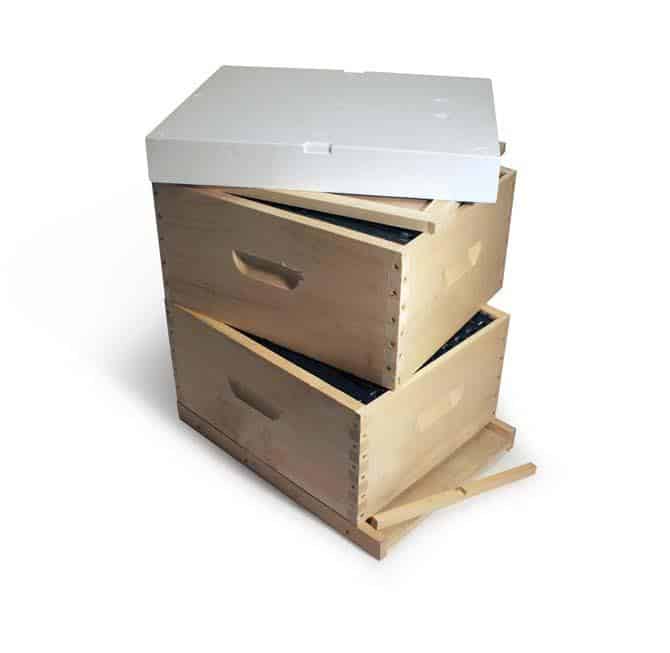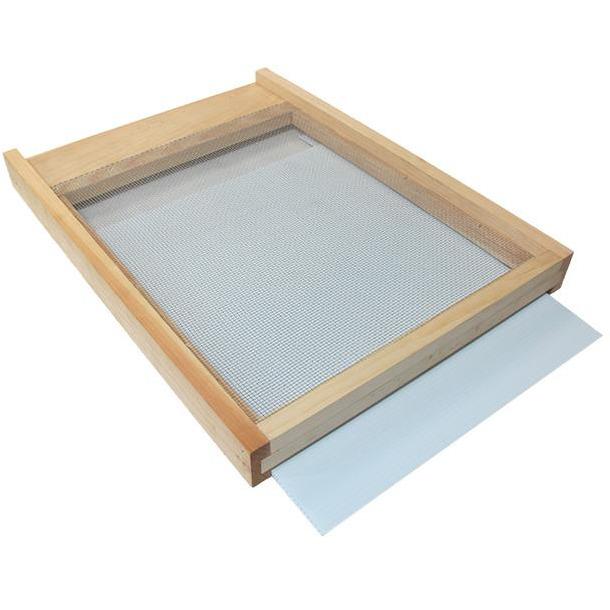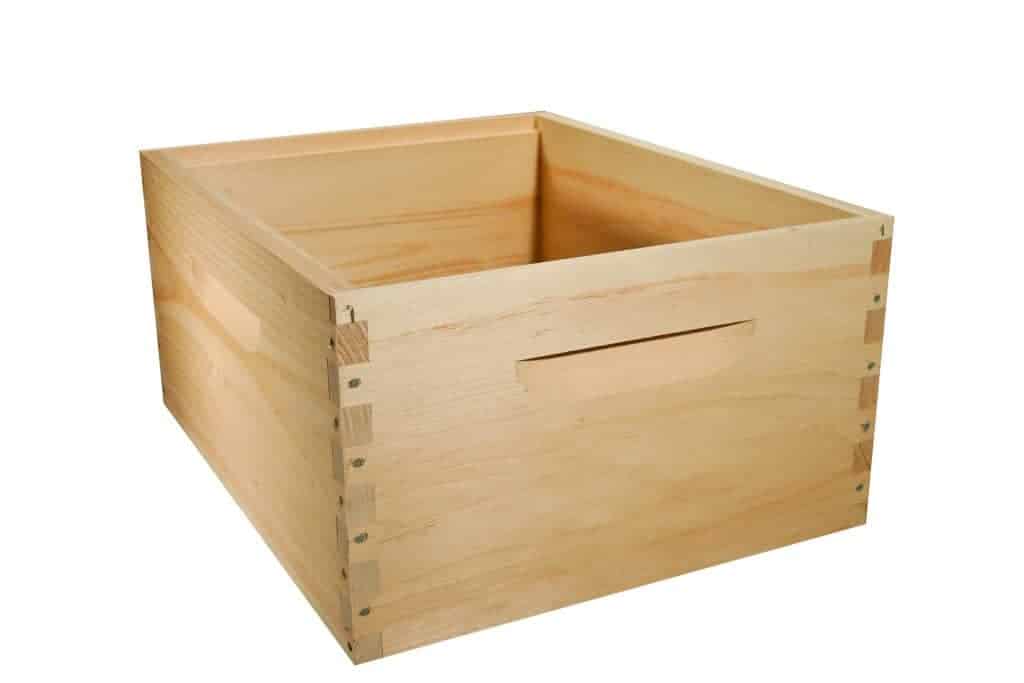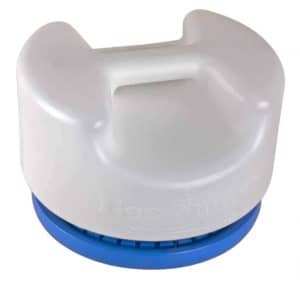The Hive of Choice – With Many Choices
With the continued growth in interest in beekeeping and the ever-expanding choice of product options, many new beekeepers wonder where to start. At a high level, though, there are three main types of hive in use today – the Langstroth, the Top Bar and the Warre.
Of these, the Langstroth is both the most traditional and the popular. It is also the design with the potential for the highest honey yield.

For many beekeepers, though, honey yield is merely a happy byproduct of their beekeeping and not a primary concern. Instead, they experience a tremendous joy in seeing their bees establish themselves in a new hive and going on to thrive.
Thankfully, the Langstroth offers so much more than just the promise of lots of honey! It is the most expandable of hives, can be built with a number of different woods, offers a number of different boxes sizes and uses standardized dimensions, meaning components can be purchased from many sources.
In this Product Guide, we look at the iconic Langstroth hive and the full array of options available to the beekeeper. Here’s what we cover in this Buyers Guide.
- Basic Langstroth Components
- Accessories
- Options
- Buyers Scenarios and Checklists
Basic Langstroth Components
Bottom Boards
With the possible exception of a dedicated hive stand (see below), the bottom board is the equipment on which everything rests – literally! There are a number of options for you here, but speaking in general terms, you can choose from solid or screened bottom boards.
A solid bottom board is named well – it’s essentially a solid piece of wood, appropriately sized for your choice of either 8 or 10 frame hives.

By comparison, screened bottom boards (often called Integrated Pest Management – or IPM – bottom boards), incorporate a sliding element underneath a screen. The screen allows mites to fall through the mesh, but not bees.
For further details, check out our article Screen Bottom Boards Vs. Solid Bottom Boards: Which Is Better?
The Ultimate Bottom Board is a best-seller, largely due to its modular design and how it works with other products from the Ultimate range. For example, it attaches securely to the Ultimate Hive Stand and can be fully integrated with the Ultimate IPM Robbing Screen.
We offer a range of bottom boards here.
Boxes
The boxes you use in your Langstroth are, of of course, focal to the lives of your bees! There are many choices related to your boxes, from depth, number of frames, wood type and more.
Rather than cover here, we’ve expanded on this in some detail in our Langstroth Boxes Buyers Guide.

Inner Covers
The Langstroth inner cover is often a simple design, resting on top of the uppermost box. However, some enhancements to that design offer additional features.
All inner covers are available here.
Top Covers
The Top Cover – reasonably enough – tops it all off! It is the final layer to protect your hive from the elements, pests and robbers.

Another consideration is that it can have an significant impact on the aesthetics of your beehive, from functional a more natural feel.
The Ultimate Hive Cover is another very popular product, featuring a unique design and the possibility of integrating with the Ultimate Hive Top Feeder.
There are a number of options available, each with its own benefit.
Accessories
Beyond the foundational elements of the hive, there are a number of other optional items that are used by many beekeepers.
Entrance Reducers
When a colony is first establishing itself, it may not have the strength in numbers to defend a “wide open” hive from robbers. This is a particular risk with a newly installed package of bees and can be so with a nuc too. See our article The Threat of Robbing for details.
The solution is often simple – the entrance reducer. This allows the beekeeper to constrain the hive entrance initially to a smaller space. Then, as the colony grows, the entrance can be adjusted to allow a larger gap, until the colony is strong enough to defend the hive. At that time the entrance reducer can be removed.
Entrance reducers (and mouse guards) can be found here.
Feeders
Feeding your bees can be important, depending on the time of year and the resources available to the colony. Again, installation of a package of bees is a good example of where a feeder might be justified. See Using Feeders with Your Beehive and Feeding Bees for more details.

There is a considerable choice when it comes to feeders. They all work well in their own way. The one qualifier would be the use of the entrance feeder when a colony is weak or small. This can be an invitation to robbers.
Our full range of feeders can be seen here.
Queen Excluders
Do you need a queen excluder? That’s a debate you will hear often among beekeepers. This simple piece of equipment stops a queen – but not drones or workers – from entering a box, thus ensuring that no eggs are laid there.
In the first year of a colony it’s really best to let your bees have every advantage possible to build up honey reserves. So, consider this a potential purchase a little later, but not a necessity up front.
Hive Stands
It’s important to ensure your bees are protected from insects such as ants, as well as keeping the hive free of damp. It’s therefore recommended that you ensure the hive is raised off the ground.

Many beekeepers go with a DIY approach for this and it’s not uncommon to see hives resting on concrete blocks, for example.
For a cleaner look, though, a dedicated hive stand is attractive to many.
The Ultimate Hive Stand is a neat solution. As well as the obvious job of supporting the hive, it can accept screws to attach an Ultimate Bottom Board, for additional stability. It also supports a handy swing-out frame holder, which is great when inspecting the hive and want to avoid laying frames on the ground.
Options
Components or Kit
With all these options – essential or optional – there is indeed a lot to consider. For this reason, it’s very common for beekeepers to purchase complete hives (as opposed to starter kits – see below).
To recap, a complete hive will generally include the following:
That is a functional hive, no more, no less. Given that all Langstroth hives are likely to need all these components, this is a “no fluff” way to buy a hive. Buying a complete hive can, of course, save you money compared to buying each component individually.
Standalone Hive or Starter Kit
Starter kits save time by bundling tools and/or clothing with the basic hive. They save you money too. In this regard they can be a great way to start.
On the other hand, the components in the starter kit do need to be considered. They may not always come with exactly the components you need. If you already have a smoker, for example, the one that comes with the starter kit may be redundant. Some starter kits may come with an entrance feeder, which won’t necessarily be the best choice if you are starting with a package of bees.
Box Size and Wood Choice
An important choice, especially for those with mobility issues, is that of box size.
Your choice of medium vs. deep box doesn’t really limit you in any meaningful way, since hives can easily include a mix of medium and deep boxes.
By comparison, think carefully up front about having a mix of 10 and 8 frame equipment across your hives, since you won’t be able to swap across hives of a different size. Many beekeepers stick to either 8 frame or 10 frame for just this reason.
Aside from aesthetics, the main factor with your choice of wood is whether you need to paint before use.
For more on these and other factors about box choices, see our Langstroth Box Buyers Guide.
Windows
Many “beekeepers of a certain age” will frown upon windows as unnecessary and simply a gimmick. And maybe they have a point. They are certainly not necessary – not at all.
But…. they do add a nice dimension to your beekeeping and allow an informal peek at your bees, with minimal disruption. This can be helpful when you have friends swing by who want to see your bees, but don’t really want to “suit up”.
Best-Of-Both-Worlds with The Horizontal Langstroth
Although the traditional Langstroth has proven such a popular choice, for some it creates some challenges in terms of ease of access. For those with mobility issues – or, frankly simply want an easier life around the hive – an increasingly popular choice is the Horizontal Langstroth.

This creative design features a main box that is the size of two 8 frame boxes. This provides considerable space for the colony to be established, including honey reserves, yet avoids the need to lift boxes.
When the colony does expand beyond the space in the main area, additional 8 frame boxes can be stacked on top. But this still leaves a maximum of one, 8 frame box to be lifted, so it’s a very convenient design.
Buyer Scenarios and Checklists
With all this information, where to start?
We understand that a great deal of choice can sometimes feel like a great deal of confusion! So let’s see if we can distill this down to a small number of discrete choices.
We’ve listed a few scenarios below and, if you fall into one of these, hopefully our list will help.
By the way, one recommendation that applies to all these choices…consider more than one hive? Why? There are strong benefits to being able to contrast and compare hives, even when they are positioned right next to each other.
In some situations, too, it’s possible to move resources from a strong hive to a weaker one, potentially providing a boost to the latter.
New Beekeeper, Not Sure Where to Start
To get started you are going to need a complete hive, plus tools and clothing. Here’s one way to approach that.
The PerfectBee Hive Components Bundle includes the components you need to get started. Beyond the basic option, there are choices to add a hive stand as well as a box and additional components to form a complete, functional hive.

Beyond that (and maybe choose two, for the aforementioned reasons), just add…
- One extra box, ready for when your bees need to more space
- Tools such as a hive tool, a smoker and a feeder
- Your choice of protective clothing
Currently a Beekeeper Looking To Add A Hive
If you are already established as a beekeeper, adding a hive is simple. Since you have your “one-off” products already – a hive tool, a smoker, your protective clothing and more – the component bundle is again a good option.
But there are many ways to add more hives, from low cost to premium,
On a Budget
If you are watching the pennies, consider pine as the wood of choice. There are a wide range of economy choices with very low prices, even for complete hives with frames.

Pine is a reliable and traditional choice of wood and the most popular in the US. It lasts well, although a coat of paint is strongly advised.
Like The Best of The Best
Want something special, eye-catching and worthy of your beautiful garden? And also something that is environmentally friendly?
Our Premium Collection offers hives made from US-grown woods, built with a careful eye for craftsmanship.
